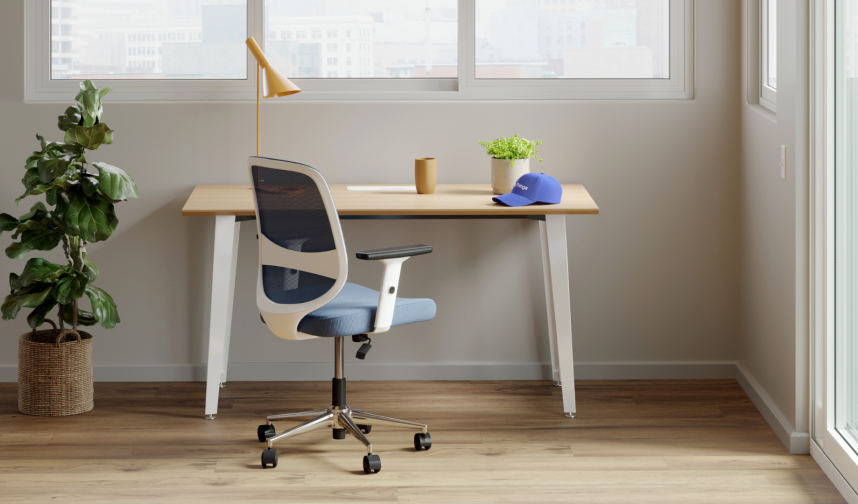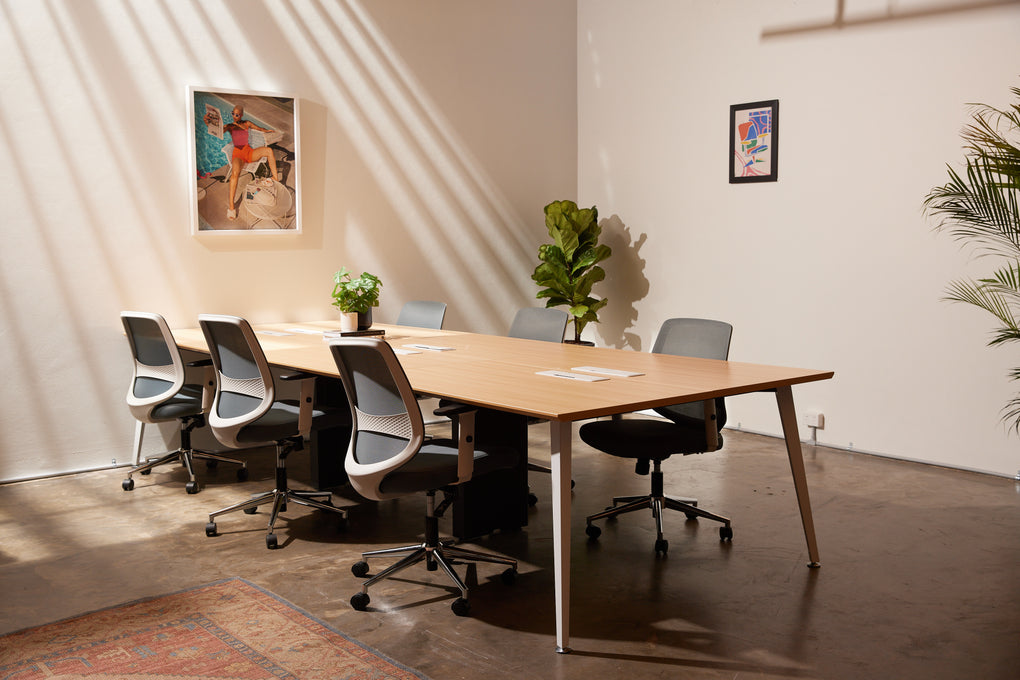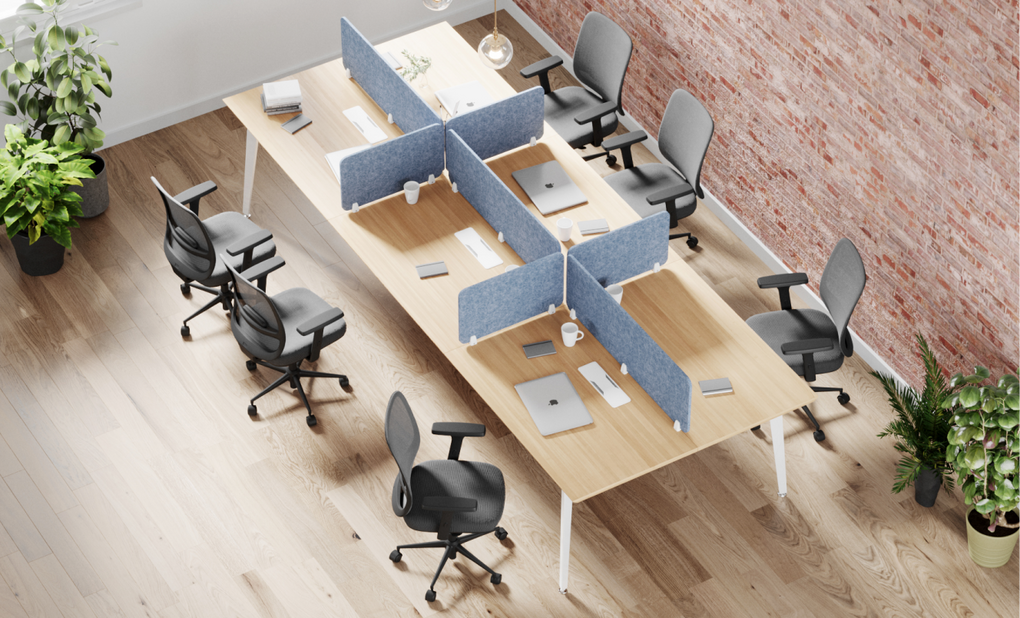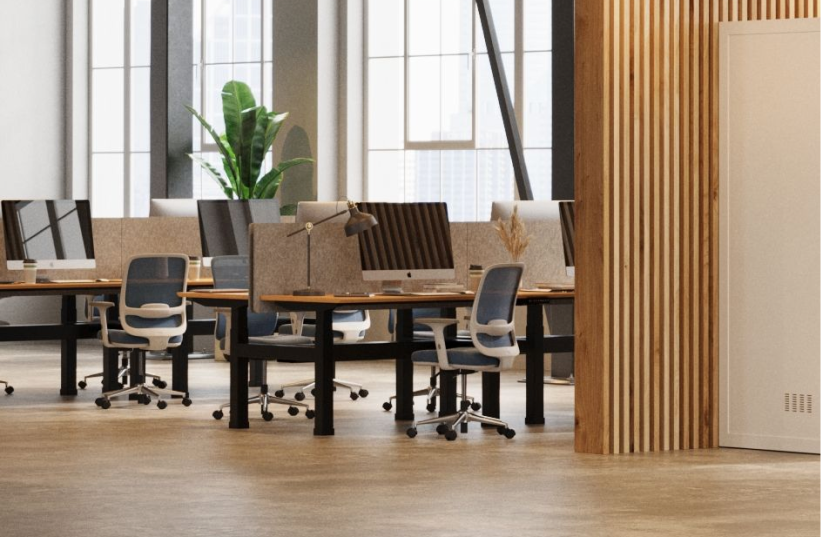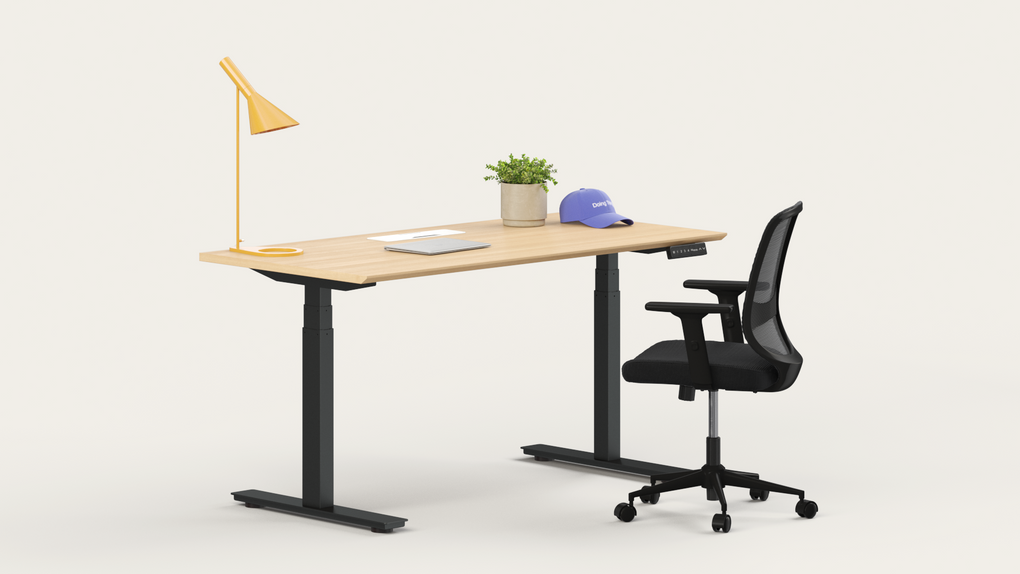How To Run More Efficient Meetings

Meetings can either strike fear in your employees' eyes or be their favourite time of day. And this is all down to how they’re structured, how efficient they are and whether employees feel empowered to tackle their tasks afterwards.
It doesn’t sound too hard, right? Unfortunately, only 50% of meeting time is used effectively. That can mean lost productivity, confused and disgruntled team members and even a potential loss in revenue, too.
The research tells us that a whopping $37 billion is wasted on unproductive meetings. But with the transition to hybrid work, there was a 1,230% increase in virtual 1:1 meetings in 2020 alone.
So what can be done in the workplace to make in-person and online meetings more effective, efficient and productive? We’re going to dive into the challenges faced by hybrid teams, how you can conduct efficient meetings and also how to set up the perfect modern meeting space.
The challenges faced by hybrid team meetings
Building a business comes with many challenges. Keeping your team running smoothly is one of them and can take hours out of your busy schedule along the way.
Without productive employees, your business can’t operate at its best. The recent shift to hybrid working means there is even more complexity to ensuring your people are happy, productive and communicating effectively.
With people dialling in remotely and turning up in-person, there are plenty of challenges your team can face when it comes to meetings, including:
-
No clear agenda ahead of time means team members turn up unprepared and don’t know what to expect from the session.
-
The combination of IRL and virtual attendees can make it tricky to ensure everyone gets a voice, especially if there isn’t one person moderating the meeting.
-
With a clear record-keeping system or agenda, tasks and action items can be missed which may slow down your project progress.
- Keeping attendees engaged during long, unstructured meetings can lead to discontent and feeling like meetings are becoming a drain and waste of time.
The good news? Overcoming these challenges and designing meetings that enhance (not hinder) your team is easier than you might think.
What makes an effective meeting?
An effective meeting has a clear, singular purpose. Louder for those in the back.
With a specific focus and objective in mind, you’ll know exactly who needs to be in the room, what you want to achieve and how long the session needs to be.
Plus, the best meetings are coordinated with a clear agenda, someone who makes sure everyone gets a voice and a list of actions that ensures no tasks are missed.
In a nutshell, an effective meeting should:
- Have a clear purpose and agenda
- Include only the relevant people
- Enable an open discussion
- Result in decisions made or a plan to follow
- End with clear actions, owners, and timelines
How to run efficient meetings for your hybrid team
Now for the good part: how to run an efficient meeting that leaves your employees feeling excited, empowered and ready for the tasks ahead. Here’s what your hybrid team needs to focus on.
What does an agenda mean? An agenda is a list of items to be discussed. During a meeting, you’ll want to set a list of topics, talking points, action items, and activities you're looking to discuss during the meeting. This will ensure that the meeting flows effectively and every point is covered.
Unfortunately, over the past 15 years, meeting lengths have increased by 10% up to 30 to 60 minutes in length. But with new research, there’s evidence that shows meetings should be a lot shorter than what you may think.
Statistics indicate that people's attention span is sharpest within the first 15 minutes of a meeting and drops off dramatically after 30 minutes.
So, to get the most effective meeting schedule in and completed, stick to meetings between 15 and 30 minutes long. Take a look at this meeting length chart created by Slack HQ to help you decide on the perfect meeting length.
|
Meeting type |
Ideal meeting length |
|
Regular team meeting |
15 to 30 minutes |
|
Decision-making meeting |
A few hours, possibly a full day depending on the decision |
|
Brainstorming meeting |
40 minutes to 1-hour |
|
Retrospective meeting |
30 minutes for every week in the project |
|
One-on-one meeting |
30 minutes to 1-hour |
|
Strategy meeting |
60 to 90 minutes |
Luckily in the hybrid working world we’re surrounded by super useful technology that makes our lives a little easier.
To make sure that your meeting runs effectively you can use these handy tools we’ve listed below.
- Calendly (meeting scheduling tool that connects with your email account)
- Otter (a note-taking software)
- Miro (virtual whiteboard software)
-
Joan (keeps track of meeting room availability in real-time)
It’s important to make sure that everyone feels valued during the meeting whether that’s in-person or virtually.
Here are some roles you can assign to participants to make sure that the meeting runs efficiently.:
- Organizer
- Host
- Note-taker
- Time-keeper
- Decision-maker
- Voice of the customer
- Optional attendees
- Informed participants
It’s also important to communicate these roles ahead to ensure that everyone knows what part they play during the meeting. This will make sure everyone feels included and comfortable voicing their opinions and thoughts during the meeting.
Having a collaborative, exciting place for meetings is essential in making sure that your employees look forward to their meetings. You can create the perfect meeting room by adding some essential items into the space that aren’t just comfortable but also ergonomic.
Adding a set of the Ergo Chairs means that there won’t be any sore backs or numb bottoms in sight. Plus, it’s important to have meeting desks that can be hooked up to screens, laptops and other meeting tech to make sure the meeting runs smoothly.
Ready to create efficient meetings with your team?
Creating a productive, flexible and collaborative work environment means making the most out of your day-to-day schedule and ensuring that your team are motivated and inspired by their meetings.
Are you ready to build a beautiful hybrid office space that encourages collaboration and employee engagement? Recess takes the hard work out of furnishing your agile work environment, so you can focus on retaining talent and improving innovation.
Discover our office furniture and score our Active Bundle (packed with everything your team needs to stay focused all day long).



